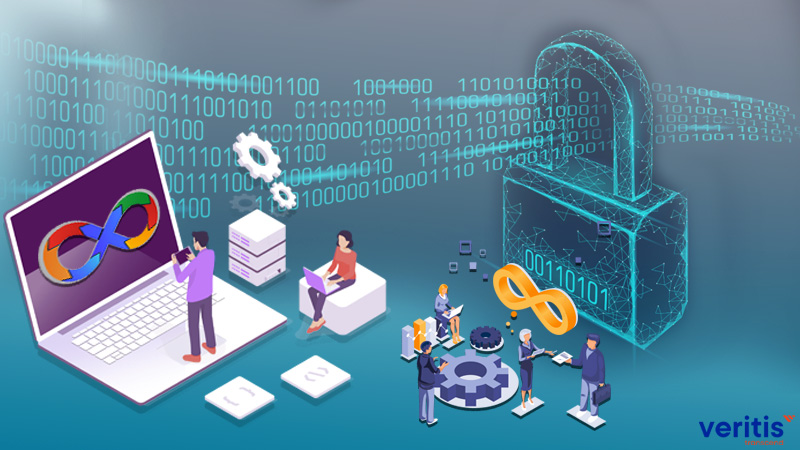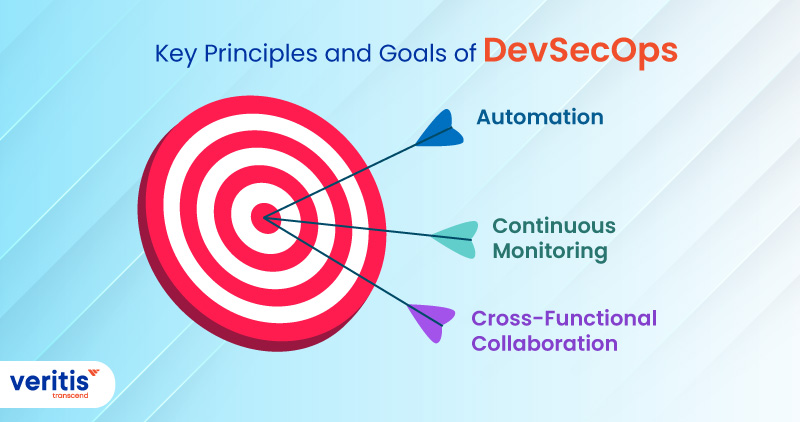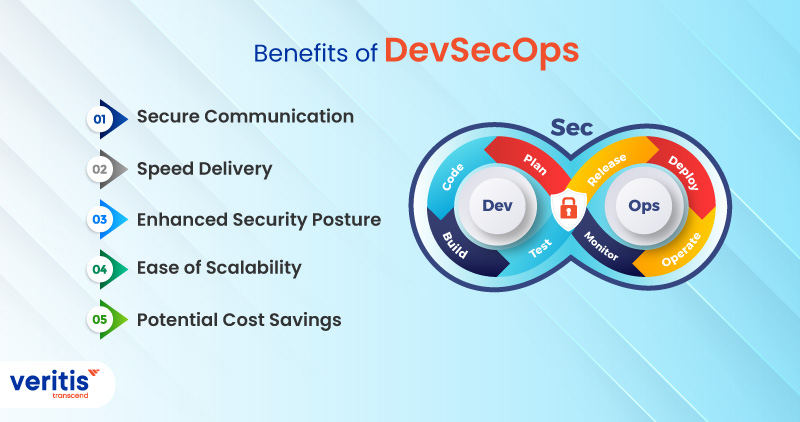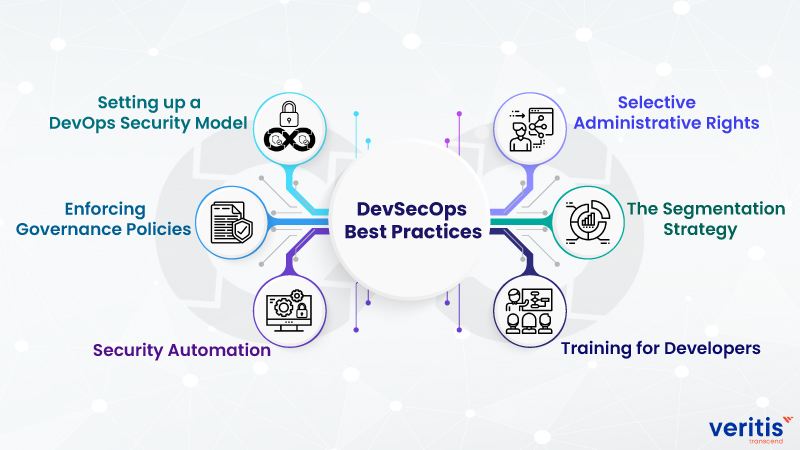
DevSecOps model aims to bring the various aspects, i.e., development, security, and operations, under one umbrella to pursue a singular objective. The purpose of DevSecOps is to ensure the same level of development and operations from the beginning of the process to the maintenance stage.
Organizations face numerous obstacles like staff shortages and numerous gaps between the collaborating teams of the DevSecOps process.
Developing and maintaining software is a continuous and complicated process that involves close collaboration between Development (Dev) and Operations (Ops) teams. This collaborative approach is DevOps and was coined a decade ago by software engineers John Allspaw and Paul Hammond while discussing their successes at Flickr, where they achieved better alignment between these two teams. However, as the need for increased security in information systems has grown, the term has evolved into DevSecOps principles, which include a specialized security team in the development process.
DevSecOps means considering security when developing software and setting up systems. This way, security is automated and works consistently without slowing the development process. You must choose the right tools to add security measures easily to make it work. But remember, incorporating security into DevOps requires changing how companies think and work together to meet everyone’s expectations for creating and maintaining products.
How do We Ensure Security Without Compromising Agility?
Do security processes slow down the agility of delivering solutions quickly to the market? Our DevOps engineers debunked the idea of “DevOps versus security” and confirmed that security is now an essential part of DevOps practices. The DevOps culture is evolving into DevSecOps automation. Let’s explore the factors that enable the smooth integration of DevOps and security without causing tensions between the two teams.
1) Automating DevOps Security Tools and Processes
Automating tasks helps prevent security mistakes and reduces downtime and vulnerabilities. By using automated tools, you can easily spot potential threats, infrastructure issues, and vulnerable code. Prioritizing automation makes it simpler to identify and fix problems.
To enhance security in DevOps, automate the management of configurations, vulnerabilities, privileged credentials, patching, and code analysis using DevOps best practices. This way, security can effectively integrate into the entire DevOps process.
If security practices are much slower than the DevOps process, there might be resistance to adopting them. To overcome this, early in the process, include automated security testing and compliance to enhance software quality.
2) Establishing Shared Responsibility
In DevOps, collaboration is essential, and it means everyone shares responsibility. Developers and security teams must work closely to integrate security into the DevOps security best practices process.
Continuous sharing of knowledge and information between security and development teams is crucial for maintaining shared goals. As a custom software development company, we can use automated solutions to secure our applications and services effectively.
3) Enforcing Policy and Governance
Making easy-to-understand cybersecurity policies for developers is vital for the security of DevOps processes. It helps teams meet security requirements while coding and ensures security and compliance throughout development.
In DevSecOps automation, the security team sets the security and compliance policies, and the development team implements them at each CI/CD pipeline stage. This way, you can match the speed of application development in a DevOps environment while maintaining security.
Useful link: 9 Data Security Best Practices for Your Business
Key Principles and Goals of DevSecOps

DevSecOps means prioritizing security from the start of the development process rather than treating it as an afterthought. Integrating security practices into DevOps encourages collaboration between developers, operations, and security teams to ensure secure and reliable software.
DevSecOps principles revolve around three core concepts: automation, continuous monitoring, and collaboration across different teams.
1) Automation
Automation in DevSecOps ensures security practices are consistent and repeatable. It includes automated testing, vulnerability scanning, and configuration management.
2) Continuous Monitoring
Continuous monitoring in DevSecOps means regularly assessing and adjusting security controls as necessary.
3) Cross-Functional Collaboration
Cross-functional collaboration in DevSecOps encourages teams to communicate and share knowledge, breaking down group barriers. This approach enables a holistic approach to security.
Addressing security early and consistently reduces the risk of vulnerabilities and breaches and improves the speed and efficiency of the software development process. Integrating security into DevOps security best practices allows organizations to balance speed, agility, and strong security, resulting in safer and more reliable software applications.
Useful link: All You Need to Know About DevSecOps and its Implementation
Benefits of DevSecOps

Adopting DevSecOps offers numerous benefits, including the following:
1) Secure Communication
DevSecOps is valuable because it breaks down barriers between development teams. It lets operational and development teams work together, share expertise, and improve each other’s processes and practices.
DevSecOps specialists communicate with various teams and teach them about DevOps and security. They use cloud-native technologies like encryption and secure VPN services to maintain security while collaborating with others.
DevSecOps helps clarify and resolve issues like finding the right person or team to fix a problem and ensuring all team members can meet security targets effectively.
2) Speed Delivery
Integrating security into the CI/CD pipeline detects bugs and vulnerabilities early, ensuring prompt resolution. It boosts developers’ confidence in code reliability, enabling them to focus on delivering new features. This approach enhances overall security and accelerates the development process, leading to faster software delivery.
3) Enhanced Security Posture
DevSecOps offers the major advantage of creating a secure environment for development teams. It ensures security throughout the entire software development lifecycle, from pre-production stages to production, testing, and software delivery.
In this strategy, security is an essential part of software development, not an afterthought. It begins by implementing basic security techniques, including integrating enterprise firewalls, monitoring server logs, securing production workloads, and requiring employees to use VPNs.
4) Ease of Scalability
Once DevSecOps framework processes and tools are established and tested, there’s no need for manual replication. This is particularly helpful when frameworks are needed in different locations or when additional computing resources are required.
DevSecOps ensures security is consistently implemented as the environment adapts to new demands. With the aid of DevSecOps automation, scaling these security processes and systems up or down becomes simple with just a few clicks.
5) Potential Cost Savings
DevSecOps principles accelerate the development and software delivery process by detecting and resolving real-time security issues. This results in DevOps teams requiring fewer working hours to complete projects, leading to cost savings for organizations.
Moreover, the reduced likelihood of security issues can also decrease the number of people required in operation teams to carry out a secure software development lifecycle process.
To mitigate this, there is a need to ensure a smooth transition from conventional practices to a sophisticated DevOps pipeline, and organizations should leverage an array of DevSecOps best practices to implement DevSecOps security.
Useful link: Pros and Cons of DevSecOps
Top 6 DevSecOps Best Practices:

1) Setting up a DevOps Security Model
Perhaps the primary step in adopting the DevSecOps model is to incorporate Identity and Access Management (IAM), cybersecurity measures, code review, configuration, and governance through the DevOps security tools.
Assigning security to the various stages of the DevOps security best practices pipeline makes it easy to ensure the secure release of products and reduce the probability of glitches, bug-fixing, and recalls after product release through the DevSecOps process.
2) Enforcing Governance Policies
One of the DevSecOps model’s key aspects is setting up governance policies and IT protocols that ensure data protection throughout the DevSecOps pipeline. Since the operations keep varying in an organization, the board, committee, and officers’ roles and responsibilities would be affected somehow.
Hence, it is important to follow regulations and procedures for protecting the DevSecOps framework and ensure transparency in the organization. Setting transparency will also help in combating suspicious internal threat behavior and negate any damage.
3) Security Automation
Security teams must be fast and agile during the development of DevOps to ensure high security. This requires automation to reduce errors and maximize the DevSecOps pipeline’s efficiency. In addition, through vulnerability testing and privilege management, organizations can save resources and cut down on work hours and costs with DevSecOps tools.
4) Training for Developers
While adopting the DevSecOps framework, one of the biggest challenges is to get a hundred percent cooperation from your stakeholders. Various teams, like development, operations, and security, function in their silos, propagate their agenda and line up tasks.
Finding the right amount of investment and carving out time for the development team to understand secure coding is a big challenge.
5) The Segmentation Strategy
Another way to implement DevSecOps best practices is to avoid hackers and attackers through segmentation. This is a great way to employ the divide-and-conquer strategy regarding. Access to the application resource server becomes limited and addresses issues from a continuous workflow.
Hence, dividing the network into various segments makes it extremely difficult for hackers/attackers to access the data in one go illegally. This is a powerful technique in DevSecOps security as it brings down hackers’ threats and keeps the errors negligible.
6) Selective administrative rights
One of the best ways to bring down internal threats on the DevSecOps security front is by keeping the privileges minimal. This helps keep the amount of data accessible by a single party to a minimum. It is one of the DevSecOps best practices as it helps local machines store essential data for regulating access.
How Veritis Helps
Veritis, the Stevie Award winner, offers DevSecOps security through an approach that includes incorporating security as an essential aspect of DevOps best practices. We believe in glitch-free building systems, with all the loopholes addressed at the beginning stages of development.
From Fortune 500 companies to emerging organizations, Veritis has been the preferred technology partner for many. Our excellence in DevOps has outclassed its competitors to win the Stevie Award. With our expertise, we will modernize your legacy infrastructure. So, reach out to us and embrace a cloud solution that suits you best.
Got Questions? Schedule A Call
Additional Resources:
- Veritis Receives Prestigious Globee Business Award for DevSecOps Excellence in IT Services
- DevSecOps Implemention : Enhancing Security for an Energy Services Firm
- DevOps vs DevSecOps: Approaches Which Amplify Automation and Security
- Signs of a Failed DevSecOps Strategy Which None Should Ignore
- Achieving Continuous Application Security with DevSecOps